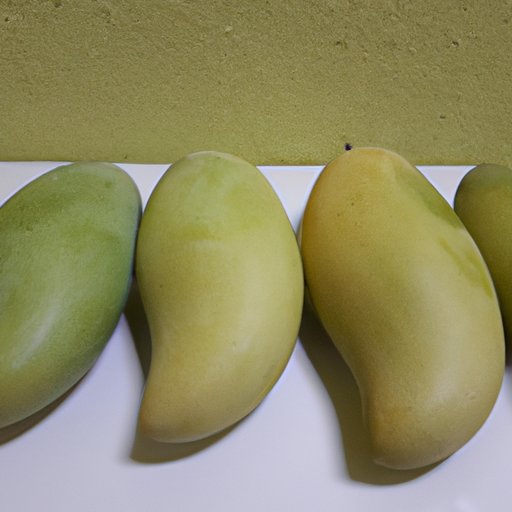Introduction
Mangoes are one of the most popular fruits in the world. They are sweet, juicy, and packed with vitamins and minerals. But can you eat the skin of a mango? It’s a question that has been asked by many people who love this delicious fruit. In this article, we will explore the benefits and risks of eating mango skin, as well as tips on how to enjoy the fruit without consuming the skin.
Is it Safe to Eat the Skin of a Mango?
The short answer is yes, you can eat the skin of a mango, but there are some potential risks involved. The skin of a mango contains a number of beneficial nutrients, including fiber, vitamin C, and antioxidants. Eating the skin can also help you get more of the fruit’s flavor and sweetness. However, there are also some potential risks associated with eating mango skin. For instance, the skin may contain pesticide residues or other contaminants, which could be dangerous if consumed in large amounts.

The Pros and Cons of Eating Mango Skin
There are both pros and cons to eating the skin of a mango. On the plus side, the skin is rich in beneficial nutrients, including fiber and vitamin C. Eating the skin can also help you get more of the fruit’s flavor and sweetness. On the downside, the skin may contain pesticide residues or other contaminants, which could be dangerous if consumed in large amounts.

How to Enjoy a Mango Without Eating its Skin
If you don’t want to eat the skin of a mango, there are still plenty of ways to enjoy the fruit. One option is to peel the mango before eating it, removing the skin completely. This will help to reduce your exposure to any possible contaminants, while still allowing you to enjoy the taste and texture of the fruit. You can also cut the mango into slices or cubes and use them in salads, smoothies, or other dishes.
A Guide to Eating Mango Skin Safely
If you decide to eat the skin of a mango, there are a few steps you can take to do so safely. First, look for organic mangoes whenever possible. This will help to reduce your exposure to any pesticides or other contaminants. Second, make sure to wash the mango thoroughly before eating it. This will help to remove any dirt or residue that may be present on the skin. Finally, avoid eating large amounts of mango skin at once. Eating too much can increase your risk of exposure to contaminants.
Conclusion
Eating the skin of a mango can offer some health benefits, but it also comes with some risks. Organic mangoes are best, and you should always wash them thoroughly before eating the skin. If you decide to eat the skin, do so in moderation to reduce your exposure to any possible contaminants. There are also plenty of ways to enjoy the fruit without consuming the skin, such as peeling it, slicing it, or using it in recipes. Ultimately, the decision to eat the skin of a mango is up to you.


